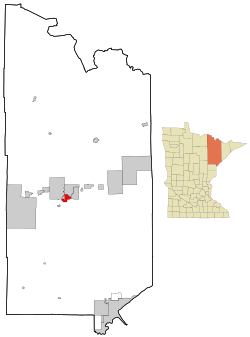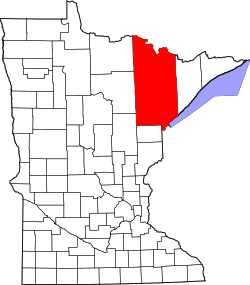2010 census
As of the census [15] of 2010, there were 3,718 people, 1,682 households, and 921 families living in the city. The population density was 591.1 inhabitants per square mile (228.2/km2). There were 1,942 housing units at an average density of 308.7 per square mile (119.2/km2). The racial makeup of the city was 95.0% White, 0.5% African American, 1.8% Native American, 0.3% Asian, 0.1% from other races, and 2.2% from two or more races. Hispanic or Latino of any race were 0.9% of the population.
There were 1,682 households, of which 28.5% had children under the age of 18 living with them, 36.0% were married couples living together, 13.1% had a female householder with no husband present, 5.6% had a male householder with no wife present, and 45.2% were non-families. 38.9% of all households were made up of individuals, and 13.2% had someone living alone who was 65 years of age or older. The average household size was 2.14 and the average family size was 2.83.
The median age in the city was 39.6 years. 22.8% of residents were under the age of 18; 8.2% were between the ages of 18 and 24; 25.5% were from 25 to 44; 27.3% were from 45 to 64; and 16.1% were 65 years of age or older. The gender makeup of the city was 48.7% male and 51.3% female.
2000 census
As of the 2000 census, there were 3,865 people, 1,717 households, and 971 families living in the city. The population density was 611.0 inhabitants per square mile (235.9/km2). There were 1,965 housing units at an average density of 310.6 per square mile (119.9/km2). The racial makeup of the city was 96.48% White, 0.16% African American, 1.73% Native American, 0.41% Asian, 0.08% from other races, and 1.14% from two or more races. Hispanic or Latino of any race were 0.23% of the population. 16.6% were of Finnish, 14.1% German, 14.1% Norwegian, 8.6% Italian, 7.7% Slovene and 6.1% Swedish ancestry.
There were 1,717 households, out of which 26.8% had children under the age of 18 living with them, 40.4% were married couples living together, 11.8% had a female householder with no husband present, and 43.4% were non-families. 38.1% of all households were made up of individuals, and 16.2% had someone living alone who was 65 years of age or older. The average household size was 2.14 and the average family size was 2.80.
In the city, the population was spread out, with 21.6% under the age of 18, 8.6% from 18 to 24, 26.5% from 25 to 44, 22.2% from 45 to 64, and 21.1% who were 65 years of age or older. The median age was 41 years. For every 100 females, there were 89.2 males. For every 100 females age 18 and over, there were 84.0 males.
The median income for a household in the city was $27,736, and the median income for a family was $37,069. Males had a median income of $32,723 versus $21,658 for females. The per capita income for the city was $16,635. About 10.6% of families and 15.4% of the population were below the poverty line, including 20.3% of those under age 18 and 14.2% of those age 65 or over.







